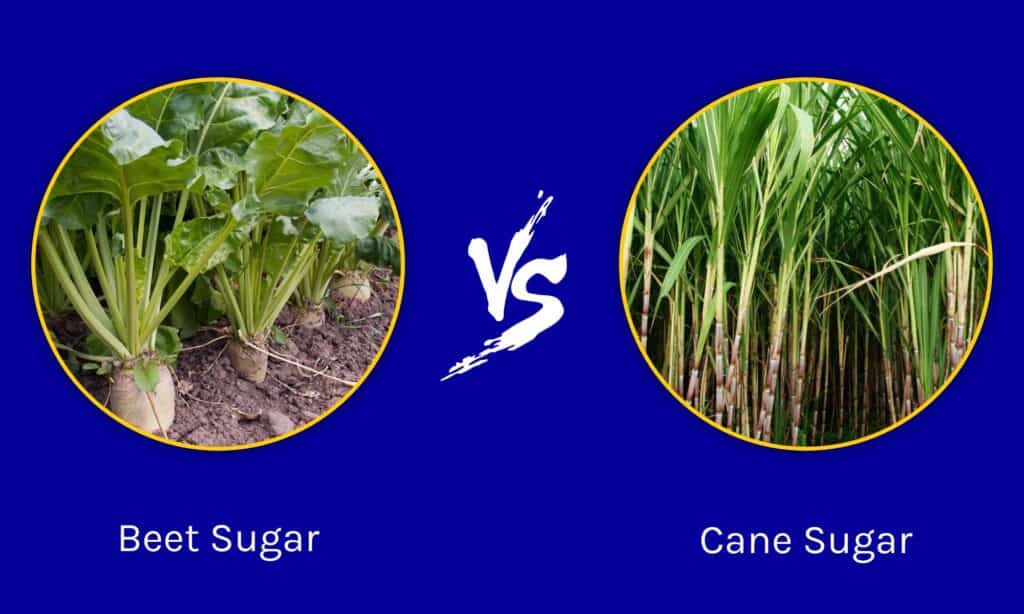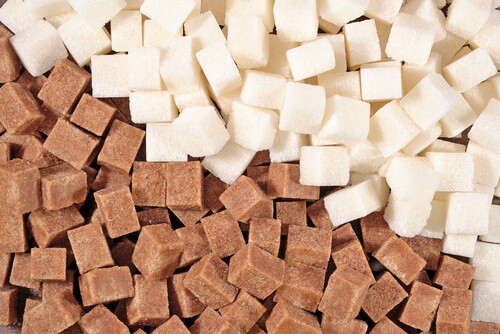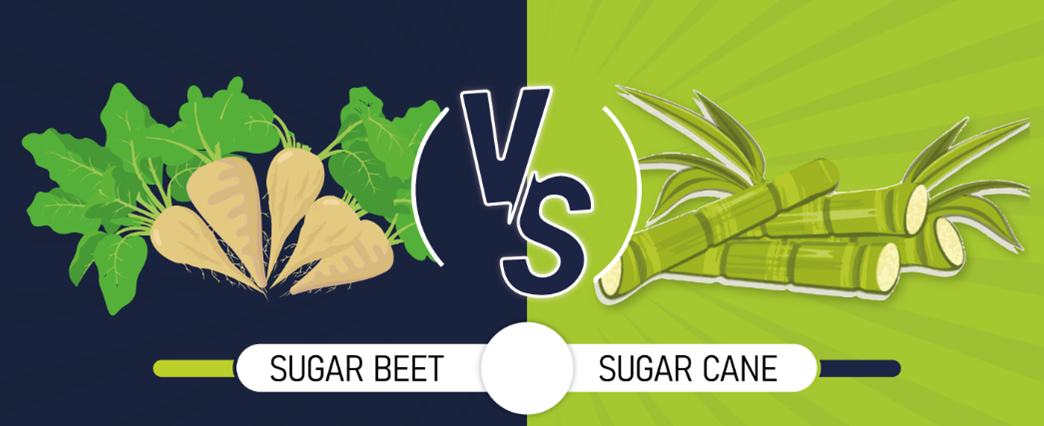Sugar beet vs sugar cane: How regional climate affects farming strategies
The Significance of Sugar Beet Vs Sugar Cane: a Closer Look at Their Manufacturing Processes and Applications
The importance of sugar beet and sugar cane expands past their role as resources of sucrose. Each plant includes distinct making procedures that influence their applications across different markets. While sugar beet supports not simply food production however additionally biofuels and plant foods, sugar cane mostly offers the food field with useful by-products. Recognizing these distinctions discloses exactly how each plant shapes agricultural economic climates and sector methods internationally, triggering further expedition right into their distinct contributions.

Overview of Sugar Beet and Sugar Cane
Sugar beet and sugar cane are two main sources of sucrose, each with unique features and cultivation methods. Sugar beet, a root veggie, grows in pleasant environments - Sugar beet vs sugar cane. It is grown mostly in the North Hemisphere and needs well-drained soil. The plant usually grows to a height of about 18 inches, with a white, fleshy root including about 15-20% sucrose. In contrast, sugar cane is a tropical turf that flourishes in warm, humid conditions. It can reach elevations of as much as 12 feet and includes tall, jointed stems that store sucrose focus varying from 10-15%. The growing of sugar cane is labor-intensive and frequently involves hand-operated harvesting. Both plants function as essential farming products, offering basic materials for sugar manufacturing and various byproducts. Their growing practices considerably influence regional economic climates and global sugar markets, making them indispensable to the farming landscape
Harvesting Methods for Sugar Beet and Sugar Cane
Harvesting strategies for sugar beet and sugar cane differ substantially because of the one-of-a-kind attributes of each plant. Sugar beet gathering normally utilizes customized equipment called beet farmers, which effectively uproot the beets from the dirt while reducing damage. These equipments use a collection of blades to cut the tops and raise the roots, guaranteeing that the beetroots stay undamaged for processing.In contrast, sugar cane harvesting typically entails two primary methods: hands-on cutting and mechanical harvesting. Hand-operated harvesting, still widespread in some regions, requires employees to cut the cane stalks by hand using machetes. This technique permits discerning harvesting however is labor-intensive. Mechanical farmers have actually gained appeal, using rotating blades to cut and gather the stalks rapidly. Both techniques intend to enhance return and top quality, with mechanical harvesting increasingly adopted to meet rising production demands effectively.
Processing Approaches for Sugar Beet
After being collected, sugar beetroots undergo a collection of handling actions to remove sucrose effectively. The very first step includes cleaning the beets to eliminate soil and impurities. Next, the beetroots are cut right into slim strips called cossettes, which increases the area for removal. These cossettes are after that based on warm water extraction in a diffusion process, permitting sucrose to liquify right into the water.Following removal, the juice includes pollutants and is cleared up making use of lime and warmth to speed up solids. The cleared up juice is then concentrated with dissipation, eliminating excess water and raising sugar focus. To take shape the sucrose, the concentrated juice undergoes more dissipation and cooling, forming sugar crystals. Ultimately, these crystals are divided from the remaining syrup through centrifugation, dried out, and packaged for circulation. This technique assures a high yield of sucrose while keeping the top quality of the final item.
Handling Approaches for Sugar Cane
Handling sugar cane includes a collection of steps made to extract sucrose efficiently. The procedure begins with harvesting, where mature sugar cane is reduced and transported to refining facilities. As soon as at the mill, the cane undergoes washing to remove contaminations. The next step is crushing, where mechanical rollers remove juice from the coarse stalks.This juice is then made clear utilizing warm and lime to get rid of suspended solids and impurities. Complying with clarification, the juice is vaporized to focus the sugar content, leading to a thick syrup. The syrup undertakes condensation, where sugar crystals create as the syrup cools. These crystals are separated from the remaining molasses through centrifugation.Finally, the sugar is dried and packaged for distribution. This thorough processing approach guarantees that sugar cane generates a high-grade item, ideal for numerous culinary and industrial this contact form applications, while making the most of the removal of sucrose from the raw material.
Nutritional Distinctions Between Sugar Beet and Sugar Cane
The comparison in between sugar beet and sugar cane extends past their processing approaches to encompass considerable dietary distinctions. Sugar beet has not only sucrose however likewise an array of vitamins and minerals, including vitamin C, potassium, and magnesium. These nutrients add to its possible wellness benefits, such as supporting immune feature and maintaining electrolyte balance. In contrast, sugar cane primarily supplies sucrose with marginal degrees of essential nutrients.Additionally, sugar beet has a greater fiber web content, which can aid in digestion and promote satiation. The presence of anti-oxidants in sugar beet might also use protective effects against oxidative anxiety, an aspect linked to various persistent conditions. While both sources are mostly utilized for sugar production, the nutritional profiles suggest that sugar beet may supply extra wellness benefits compared to sugar cane. This distinction is essential for consumers looking for even more than simply sweeteners in their diets.
Applications of Sugar Beet in Different Industries
A range of markets leverage sugar beet for its versatile applications past sugar manufacturing. In the food market, sugar beet serves as a vital component in creating numerous processed foods, consisting of sweets and baked goods, due to its all-natural sweetness. Additionally, the pulp stemmed from sugar beet is made use of as pet feed, offering a nutrient-rich resource for livestock.In the biofuel market, sugar beet is progressively recognized for its possibility in creating bioethanol, adding to eco-friendly power options. The agricultural market gain from sugar beet's by-products, which can be used as natural fertilizers, improving soil health and fertility.Furthermore, sugar beet essences are used in pharmaceuticals and cosmetics, where they operate as natural sugar and humectants. These varied applications highlight sugar beet's role as a valuable source in enhancing sustainability and advancement across numerous sectors, reinforcing its relevance in modern manufacturing practices.
Applications of Sugar Cane in Different Industries

Often Asked Inquiries
What Ecological Impacts Are Connected With Sugar Beet and Sugar Cane Production?
The ecological influences of sugar beet and sugar cane production include soil degradation, water usage, pesticide application, and environment disturbance. These see variables add to read here ecological imbalances, elevating problems concerning sustainability in farming techniques connected with both crops.

How Do Sugar Beet and Sugar Cane Contrast in Terms of Economic Viability?
The economic practicality of sugar beet and sugar cane differs based on variables like geographic place, manufacturing prices, and market demand - Sugar beet vs sugar cane. Both plants provide special benefits, affecting farmers' decisions regarding growing and financial investment in various areas
What Are the Key Regions for Sugar Beet and Sugar Cane Cultivation?

Just How Does Climate Affect the Development of Sugar Beet and Sugar Cane?
Climate substantially affects the development of sugar beet and sugar cane. Sugar beetroots thrive in cooler temperatures, while sugar cane needs cozy, exotic problems. Sugar beet vs sugar cane. Both plants depend on sufficient rainfall and sunshine for perfect advancement and yield
Are There Any Kind Of Substantial Health Problems Connected to Consuming Sugar From These Resources?
Health and wellness concerns pertaining to sugar consumption consist of excessive weight, diabetes mellitus, and heart condition. Both sugar beet and sugar cane-derived sugars can add to these issues, particularly when eaten in too much quantities, despite their resource.